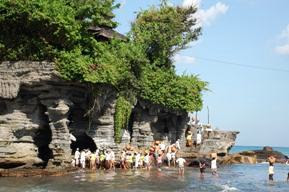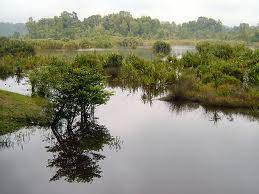Generally, almost all cuisines indigenous peoples regardless of any quarter whatsoever based ingredients that are easily available from the surrounding area. For the indigenous peoples who live in rural areas, food ingredients obtained by hunting consists of fruits of the forest, wood shoots and so on. For the indigenous peoples who live near the river, they are prone to food ingredients such as fish, snails, and shrimp terrapin. This situation will affect the recipe and a cooking style tribes. For example, Bateq tribes living in remote areas get food from raw materials such as vegetables, cabbage-cabbage, fruits and ferns. Their main source of carbohydrates and are of different types of plants such as sweet potatoes godong which is available throughout the year.
However, in keeping with the times recipe Aborigines began to receive influence from the cuisine of Malay people living in nearby villages. Even so, they still retain the authenticity and identity of their traditional cuisine, but there are some changes to increase the use of materials such as acid, sugar and coconut milk.
In the process of food preparation, the cooking method used by indigenous peoples are very 'simple' as baked, grilled, poached or smoked. Cooking utensils used by Aboriginal currently still involves the use of bamboo, clay pots and wood stoves. This clearly shows that even though the country has made progress, indigenous peoples still managed to maintain its customs, culture and heritage.
However, in keeping with the times recipe Aborigines began to receive influence from the cuisine of Malay people living in nearby villages. Even so, they still retain the authenticity and identity of their traditional cuisine, but there are some changes to increase the use of materials such as acid, sugar and coconut milk.
In the process of food preparation, the cooking method used by indigenous peoples are very 'simple' as baked, grilled, poached or smoked. Cooking utensils used by Aboriginal currently still involves the use of bamboo, clay pots and wood stoves. This clearly shows that even though the country has made progress, indigenous peoples still managed to maintain its customs, culture and heritage.










